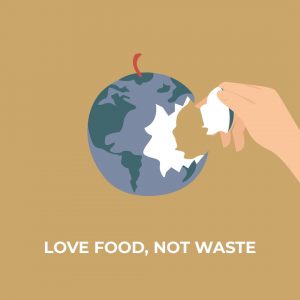Many individuals make New Year’s resolutions, and these days some companies are even getting into the game. Several prominent companies including Marriott (the hotel and hospitality company), Nestle Global (the international food and beverage company), and several branches of the U.S. government have pledged to reduce food waste in 2020. I have been working with the Second Harvest Food Bank of South Central Wisconsin (a Feeding America operation) to develop a guide that informs decision-making as to whether food that is donated to, or recovered by, a food bank or food pantry can safely be distributed to food pantry guests.
The Reduce Food Waste Guide is designed to help food pantries and food banks make food-safe decisions based on food product dates. The guide uses science-based information to establish the time-frame when we can confidently encourage food pantry guests to accept, and consume, donated products. Shelf-stable products like cereals and box dinners will be safe and of acceptable quality for weeks or months past the date marked; after that time, though, they may have lost so much quality that we don’t recommend distributing them. Products that must be kept refrigerated present more of a challenge. Certain harmful bacteria can grow in products if they are held long enough, even if these products are kept refrigerated. For products that must be refrigerated, there is less time to distribute, and use, a product after the date marked on the package. In the guide, we have taken knowledge of food science and microbiology to establish a time-frame for reducing food waste while maintaining food safety. Research has shown that food pantry guests are more susceptible to foodborne illnesses and experience negative health outcomes if deprived of safe, nutritious foods. Please distribute the Reduce Food Waste Guide to partner agencies so that Extension can support a safe and healthy diet for those in need.
What should a food bank or food pantry do with food that should not be distributed? Whether it’s food that is visibly spoiled, food from an unsafe source such as a home kitchen, or food that has exceeded a food-safety date, food banks and food pantries do end up having to discard some foods. But food disposal comes at a cost. Food banks and food pantries are encouraged to consider two options for reducing food disposal costs: 1) Develop a food safety plan that clearly informs donors and food pantry staff and volunteers as to the type of foods that can be accepted for distribution, and those that can not. Work with staff or any oversight Board to adopt the plan and post it for all to see. Adhere to the food safety plan when making decisions as to whether or not to accept donations and for sorting food pantry stock. [Do not offer unacceptable foods as ‘pet food’; pets are just as susceptible to Salmonella and other harmful germs!] Sample food safety plan language is here. 2) Start composting! Work with Extension master gardener volunteers and local municipalities to establish a food composting program that will allow diverting food waste into compost.
Other tools to support food safety in food banks and food pantries are available as part of the Safe & Healthy Food Pantries project. Stay food-safe and have a Happy New Year!




